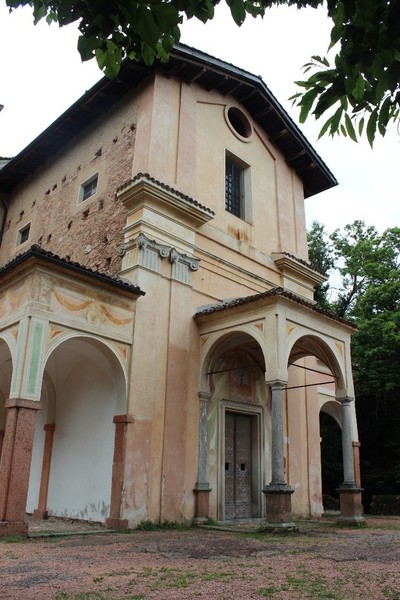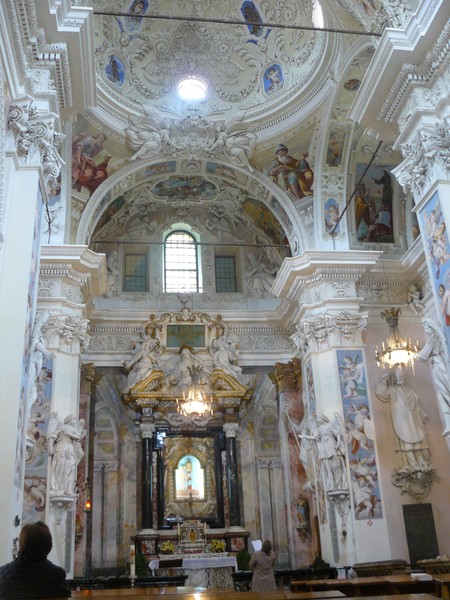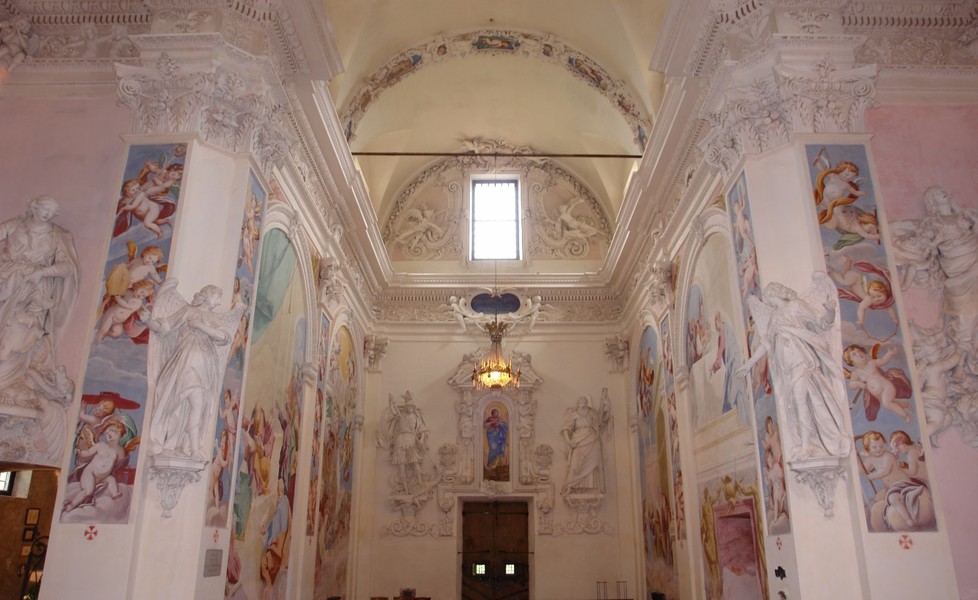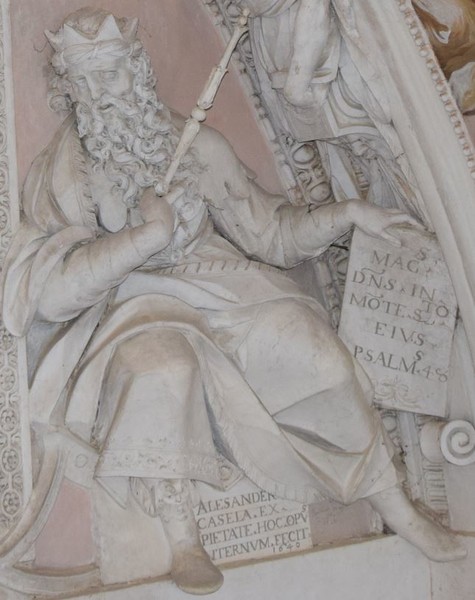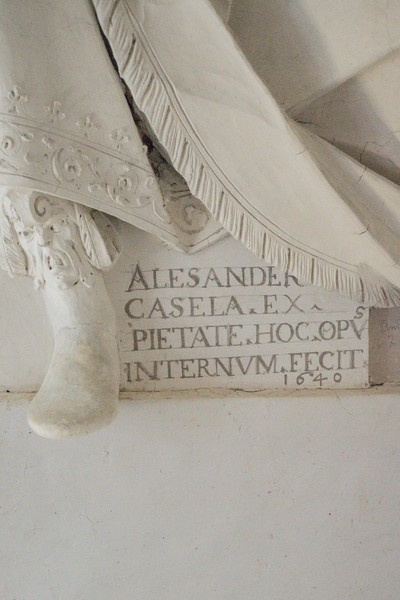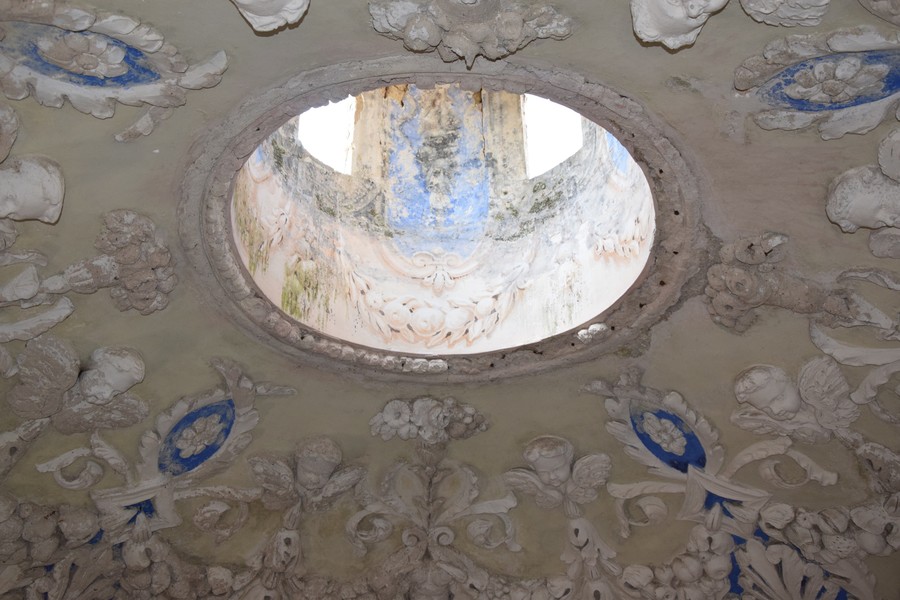SANCTUARY OF THE MADONNA OF ONGERO
Santuario della Madonna d’Ongero
Via Madonna d’Ongero 1
6914 Carona - Lugano
The Sanctuary of Ongero stands in forest solitude a short distance from Carona. It was constructed from 1624 to 1646 on the site of an older votive chapel that held a fresco, dated 1515, of the Madonna of Loreto, still preserved on the main altar (Fig. 1, 2).
The church takes the shape of a Latin cross, with a single nave (Fig. 3) and a transept formed by two side chapels, and a dome rising above the intersection (Fig. 4). The interior decoration was executed in the 17th to 18th centuries by important artists from Carona, including Alessandro Casella (1596-1656). He and his workshop are responsible for most of the stucco work from 1646 onwards. The decorations in the chancel area, part of the counter-façade and at least three of the four angels on the corner pillars at the transept intersection are his (Fig. 5). In the same years, Giacomo (1620-1667) and Andrea Casella (1619-ante 1672) frescoed the Annunciation, the Nativity and the Glory of the Virgin in the choir vault, while the decorations in the side chapels were carried out in the following decades (Fig. 6, 7, 8, 9). The altarpieces are by Andrea (Vision of St Anthony of Padua in the Presence of St Charles Borromeo, in the chapel of St Anthony, dated 1659) and Giacomo Casella (Our Lady of Loreto in Glory with St Joseph, St Ursula and the patron, in the chapel of St Joseph), while the stucco decorations are by an unknown author. The last interventions were by Giuseppe Antonio Petrini (1677-1759) who frescoed the walls of the nave in the mid-18th century. The stucco decoration has been restored, with cleaning, consolidation and reintegration work, by Carolyn Hollinger and Maria José Castané (2001-2002) and by Rudy Sironi (2022-2024).
Interior
Most of the stuccos, beginning with those in the chancel, can be attributed to the hand of Alessandro Casella or his workshop. The iconography adheres to a scheme exploited repeatedly by this master and widespread among Ticino stucco artists. Seated on the cornice above the main altar are monumental figures of prophets, in this case Moses and David (a plaque at the foot of the latter bears Casella’s signature and the date 16461)(Fig. 10, 11, 12). Below, on the altar pediment, the personalities of Faith and Hope are placed to the sides of God the Father (Fig. 13). On the side walls, completing an ideal design referring to both Old and New Testaments, stand two Church Fathers, St Jerome and St Augustine (Fig. 14). Both of these figures stand full-length on corbels, supported by caryatids with eel tails ending in feathered tips.
Casella’s masterly direction is especially appreciable in the larger figures, such as the Angels of the transept: their elegant pose is studied on the basis of the observer's point of view, looking up from below (Fig. 15, 16).
On the counter-façade, on the broad entablature running along the inner perimeter of the building, is a large cartouche supported by a pair of angels. In this, in addition to the dedication of the building to the Virgin, we find the date 1648 (Fig. 17). The window above this is framed by volutes, vegetal whorls, festoons, angels and cherubs, the latter not of the highest quality and referable to the workshop of Alessandro Casella, as is the frame of the wall painting with the Immaculate Conception (Fig. 18). On the other hand, the St George and St Andrew placed at the bottom, on either side of the door, belong to the master himself; these are on brackets supported by telamons, which like the caryatids in the chancel, have eel tails with feathered ends (Fig. 19).
The three shield-bearing angels are later than the interventions by Casella and workshop, as are the stuccos in the two transept chapels and the pairs of angels on the nave cornice (Fig. 20). The similarity between these angels and those in Curio's reliquary (by Giovanni Banchini, 1695) is very strong.





















